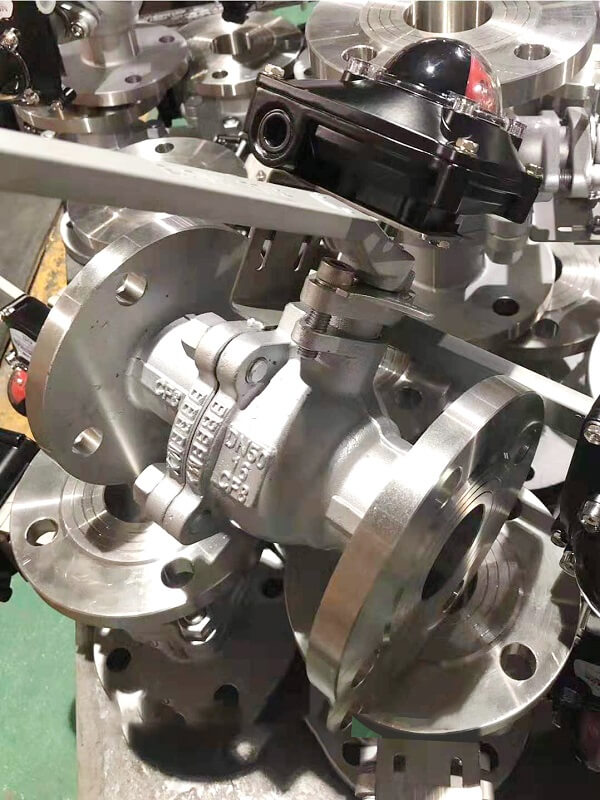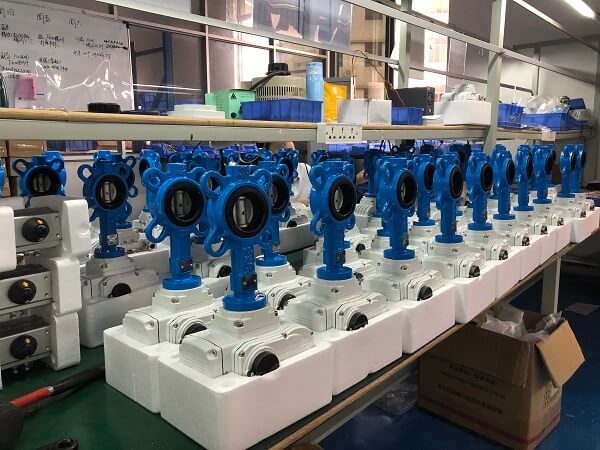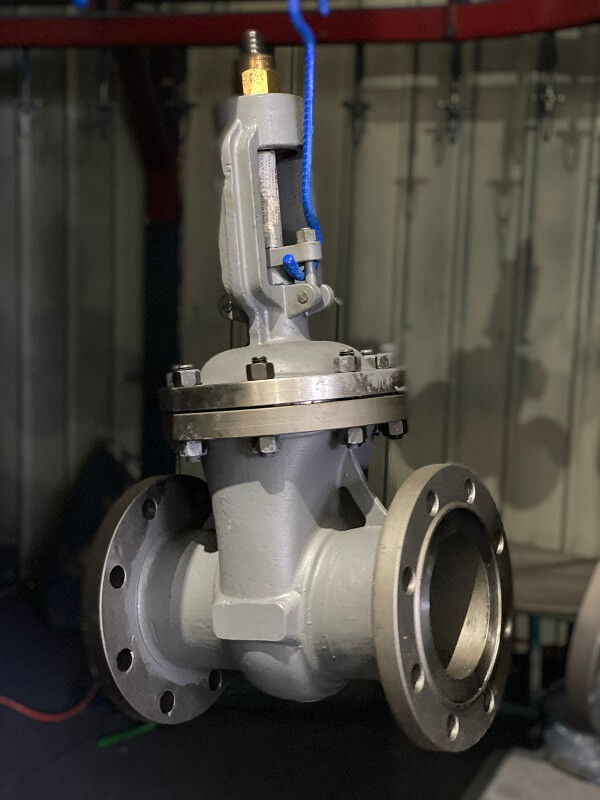1. Cock Valve
Features: TN less than 150 degrees PN less than 1.6 MPA, its structure is simple, open and close quickly, easy to operate, small fluid resistance and so on
Points to note:
1.1 The outer end of the stem is square, the straight line marked diagonally is closed in the direction of the valve body and open in the direction of the Valve Body;
1.2 Kauke wrench for normal opening and closing valves to avoid safety accidents caused by slipping with the stem; try not to use adjustable wrench to cause slipping;
1.3 Open the valve according to the inspection item in front, open the valve slowly after inspection, do not stand in the direction of the sealing surface when opening, acid-base fluid must wear an acid mask;
2. Ball Valve
Ball valve and cock valve is the same type of valve, but its opening and closing piece is a ball with a through hole, ball Rao stem center line rotation to open and close the goal.
Features: Valve structure is simple, reliable, used for two-way flow medium pipeline, fluid resistance is small, sealing; disadvantages: Medium easy to leak from the stem part.
Points to note:
2.1 Valve with handle, the handle is closed perpendicular to the medium flow direction and open in accordance with the direction.
If you encounter a jacket insulation ball valve should pay attention to the following matters:
2.2 The jacket heat preservation steam should be opened and closed the valve after melting the easily crystallized medium. Do not force the valve to open and close before the medium is completely melted.
2.3 When the valve can not be opened, the method of lengthening the arm can not be used to open the valve by force, as this will result in greater resistance of the stem and spool off, resulting in damage to the valve or damage to the wrench, which creates a risk factor.
The butterfly valve uses a rotating disc to control the opening and closing of the pipeline. The angle of rotation reflects the opening degree of the valve.
According to the transmission mode of different butterfly valve manual, pneumatic and electric three, commonly used for manual, rotating handle through the gear drive valve stem to close the valve.
Features: The butterfly valve has the advantages of simple structure, quick opening and closing, small fluid resistance, convenient maintenance and so on, but can not be used in high temperature and high pressure situations, PN less than 1.6 MPA, t less than 120 degrees of large diameter water, steam, air, oil and other pipelines.
Points to note:
3.1 The spool can only be rotated 90 degrees. The direction of CLOSE and Open Arrow is indicated on the body, and the handwheel turns clockwise to CLOSE and vice versa to open.
3.2 If there is some resistance to open and close, you can use a special F wrench to open the valve, but can not be forced to open and close, otherwise it will damage the valve stem gear.
3.3 It is prohibited to remove the handwheel and pull the stem with a monkey wrench. (same for lower valves)
3.4 Open and close gradually to see if there is any abnormal situation and to prevent leakage.
4. Stop Valve
Cut-off valve is the most widely used type of cut-off valve in chemical production. Compared with the above three kinds of cut-off valve, it does not use the rotation of its closed parts to open and close the valve Instead, the valve stem lift is used to drive the connected circular disc (valve head) to change the distance between the disc and the seat to control the starting and closing of the valve.
Features: The upper part of the globe valve has a handwheel, stem, the middle part has a thread and packing culvert sealing section, the small valve stem is threaded in the valve body, its structure is compact, but the valve stem and the medium contact part are many, especially the thread part is easy to corrode, the height of the stem exposing the cover can be used to judge
globe valve has complex structure, but it is easy to operate, easy to adjust flow and cut off channel, and has no water hammer phenomenon, so it is widely used.
Cut-off valve should be installed to pay attention to the direction of flow, should make the pipeline flow from the bottom up through the valve mouth, and the so-called “low in high out” , in order to reduce fluid resistance, make the valve stem and packing culvert not contact with the medium in the opening and closing state, and ensure that the valve stem and packing culvert are not damaged and leaked.
Globe valve is mainly used for water, steam, Compressed air and all kinds of materials pipeline, can more accurately regulate the flow and closely cut off channel, but can not be used for high viscosity, easy to crystallize materials.
Points to note:
4.1 Check valve for defects before opening, especially for leakage of packing culvert.
4.2 When the valve stem can not be turned directly by hand, special F spanner can be used for opening and closing. When still unable to open and close, please do not lengthen the spanner arm to open and close forcibly, thus causing damage to the valve or safety accident.
4.3 When used in medium pressure steam pipe valve, the condensate water in the pipe should be cleaned before opening, then the valve should be opened slowly with 0.2 to 0.3 MPA steam to preheat the pipe to avoid the damage of sealing surface caused by sudden increase of pressure When the check is normal, the pressure will be adjusted to the required state.
5. Gate Valve
Gate valve, also known as gate valve or gate valve, it is through the rise and fall of the gate to control the opening and closing of the valve, the gate is perpendicular to the fluid direction, change the relative position between the gate and the valve seat can change the channel size.
According to the gate valve open and close when the stem movement of the different, the gate valve is divided into clear rod type and dark rod type two.
The stem thread of rising stem gate valve is exposed outside the valve body. When the valve is opened, the stem extends out the hand wheel The screw thread part is not affected by the medium corrosion, but has the disadvantage of high overhang space.
The stem threads of non-stem gate valves match the internal threads of the stem and the gate plate. When the valve is opened, the stem rotates without going up or down, while the gate plate goes up along the stem threads. The advantage of non-rising stem gate valve is small extension space, the disadvantage is that the valve opening can not be judged according to the stem situation, the stem thread is easy to corrode in contact with the medium.
The gate valve has the advantages of small fluid resistance, constant medium flow direction, slow opening without water hammer, easy to adjust flow rate, etc. .
5.1 When the valve stem open and close in place, can not force, or will pull off the internal thread or bolt screw, so that the valve damage;
5.2 Open and close the valve when the hand can not be directly opened and closed with F wrench;
5.3 Watch the sealing surface of the valve when opening and closing, especially at the packing gland to prevent leakage.
6. Throttle Valve
Throttle Valve also known as needle-shaped valve, its shape and globe valve, its spool shape is different, conical or parabolic, often used in chemical instrumentation, often for thread connection.
Points to note:
6.1 Because of the threaded connection, the opening and closing of the first check whether the threaded connection is loose leakage;
6.2 Open and close the valve slowly, because its flow area is small, the flow rate is large, may cause the seal surface corrosion, should pay attention to observe, pay attention to the pressure changes.
7. Check Valve
Check Valve is the use of medium before and after the pressure difference and automatic opening and closing, control medium one-way flow valve, also known as check valve or one-way Valve.
Check valve according to the different structure is divided into up and down (heartbeat type) and swing type (swing pole type) two.
Points to note:
7.1 note the direction of the valve, Arrow and medium flow in line, such as medium easy to crystallize may cause the valve plate can not be pressed to play the role of command, check.
8. Safety Valve
The safety valve is a kind of valve which automatically opens and closes according to the medium pressure. When the medium pressure exceeds the set value, it can automatically open the valve to discharge the pressure, so as to avoid the danger of damage to the equipment and pipelines.
According to the balance of internal pressure in different ways, the safety valve is divided into lever hammer type and spring type two categories.
Points to note:
8.1 The Safety Valve must be used within the validity period;
8.2 Safety Valve Control Valves installed on piping and equipment are normally globe valves that must be opened to ensure effective operation of the Safety Valve;
8.3 Periodically lift the disc slightly and use media to blow away impurities in the valve.
8.4 If the relief valve does not work at set pressure, it must be revalidated or replaced
9. Steam Trap
Steam trap is a steam pipeline, heater and other equipment systems can automatically intermittent discharge of condensed water, but also to prevent the release of steam a valve. There are commonly used bell-shaped float type, thermal power type and pulse type several.
Points to note:
9.1 Before use, use the pipeline bypass valve to drain the condensate, when there is steam, close the bypass, use the steam trap main channel, otherwise the valve will close the water will not play the role of steam trap;
9.2 Do not be scalded by steam when closing the valve.
10. Various Sampling Valves
Sampling Valve as the name implies is used to obtain media samples so that chemical analysis of the valve, generally installed on the equipment or pipeline can be broadly divided into the following:
Double Opening Valve, flanged clip valve and sampling valve with insulation jacket;
How To Use It:
10.1 The double opening valve is generally composed of two ball valves, which serve the purpose of sampling safety and sampling in a negative pressure device by means of linkage. The second valve close to the equipment or pipeline is closed and the first valve is opened when sampling, let the medium flow into the space between the two valves. Then close the first valve, open the second valve, and place the sampling container on the sampling port to hold the medium.
10.2 Flange clamp valve generally through the top of the valve stem and valve seat cone hole for sealing, sampling through the hand wheel rotation will be separated from the valve stem and cone hole, so that media can flow from the cone hole to the external sampling containers.
10.3 Jacketed sampling valves should be aware of the following:
10.3.1 The jacket heat preservation steam should be opened and closed the valve can only be opened and closed after melting the easily crystallized medium in the valve, do not force the valve to open and close before the medium is completely melted.
10.3.2 When the valve can not be opened, we can not use the method of lengthening the arm to open the valve forcibly, because this will cause the valve stem to be subjected to a greater resistance and the valve core to fall off, or cause the valve stem and the conical hole sealing surface damage, resulting in valve damage or damage caused by wrench, resulting in unsafe factors.
11. Fluoroplastic Rubber-lined Valve
The fluorine plastic lining rubber valve is mainly used in the acid-alkali and other corrosive medium, its structure principle is similar to the non-fluorine plastic valve, but the valve stem, the valve core and the valve seat all use the fluorine plastic substrate, the use method is similar.
Post time: Jul-28-2021







